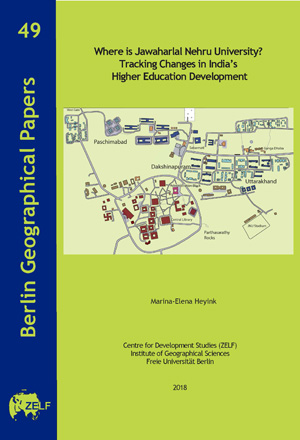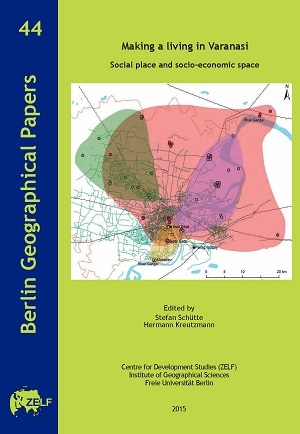Heyink, Marina-Elena
Where is Jawaharlal Nehru University? Tracking Changes in India's Higher Education Development
In recent years, the phenomenon of nationalism has evoked much attention when negotiating the institutional design of India’s universities. Justifiably rejecting the political project of naturalizing or essentializing the concepts of nation and nationhood, critical public and scientific discourse, however, often reduces nationalism to its symbolic or idealistic dimension. On the contrary, material structures of public institutional spaces have received little geographical attention when approaching national ideals, aspirations, conflicts, and controversies. This is despite the fact that constructed environments and spatial designs form a substantial link between the nation state of India and its public higher education in institutions. Arguing that space makes a difference, the paper in hand raises nationalism as a problem of simultaneous positioning. By tracking India’s higher education development through the example of Jawaharlal Nehru University campus space, I will not only focus on nationalism as a matter of symbol and categories of consciousness but also on the material dimensions of institutional design, namely building distribution, constructional aesthetics, and spatial accessibility. Thus, this work offers perspectives that extend beyond the idealization or demonization of the various notions of the Indian nation.
Making a living in Varanasi: Social place and socio-economic space
The three-semester long project was implemented in Varanasi in close cooperation with Prof. Rana PB Singh and his colleagues and students from the Department of Geography at Banaras Hindu University and with the help of a number of established contacts in the city. We could form nine mixed groups of people with local knowledge and orientation that paired with a couple of students each from the Berlin team. The thematic focus was directed on ‘Making a living in Varanasi – social place and socio-economic space’. Beyond Varanasi’s attraction as a holy pilgrimage destination and place for worship we primarily looked at professions and locations that provide opportunities for making a meagre living by hard work. Consequently, certain trades and professions, groups and communities, individuals and office-bearers who kindly allowed us to observe, follow and sit with them during their working hours and to visit them at home contributed to form a selective mosaic of living conditions in Varanasi. All nine contributions in this volume are based on the findings from these joint-endeavours that were regularly discussed and re-adjusted during our bilateral discussions and plenary meetings at night in our temporary home in Varanasi. During a follow-up seminar back in Berlin the outcomes and results were again refined and processed to such a state that we could prepare the manuscripts in a manner that they fulfilled the formal requirements which a scientific journal would demand for.









